CATALYST
DENVER MUSEUM OF NATURE & SCIENCE ONLINE MAGAZINE
Celebrating 40th Anniversary of Konovalenko's Gem Carvings
Interview with Dr. Steve Nash on an Exceptional Life's Work
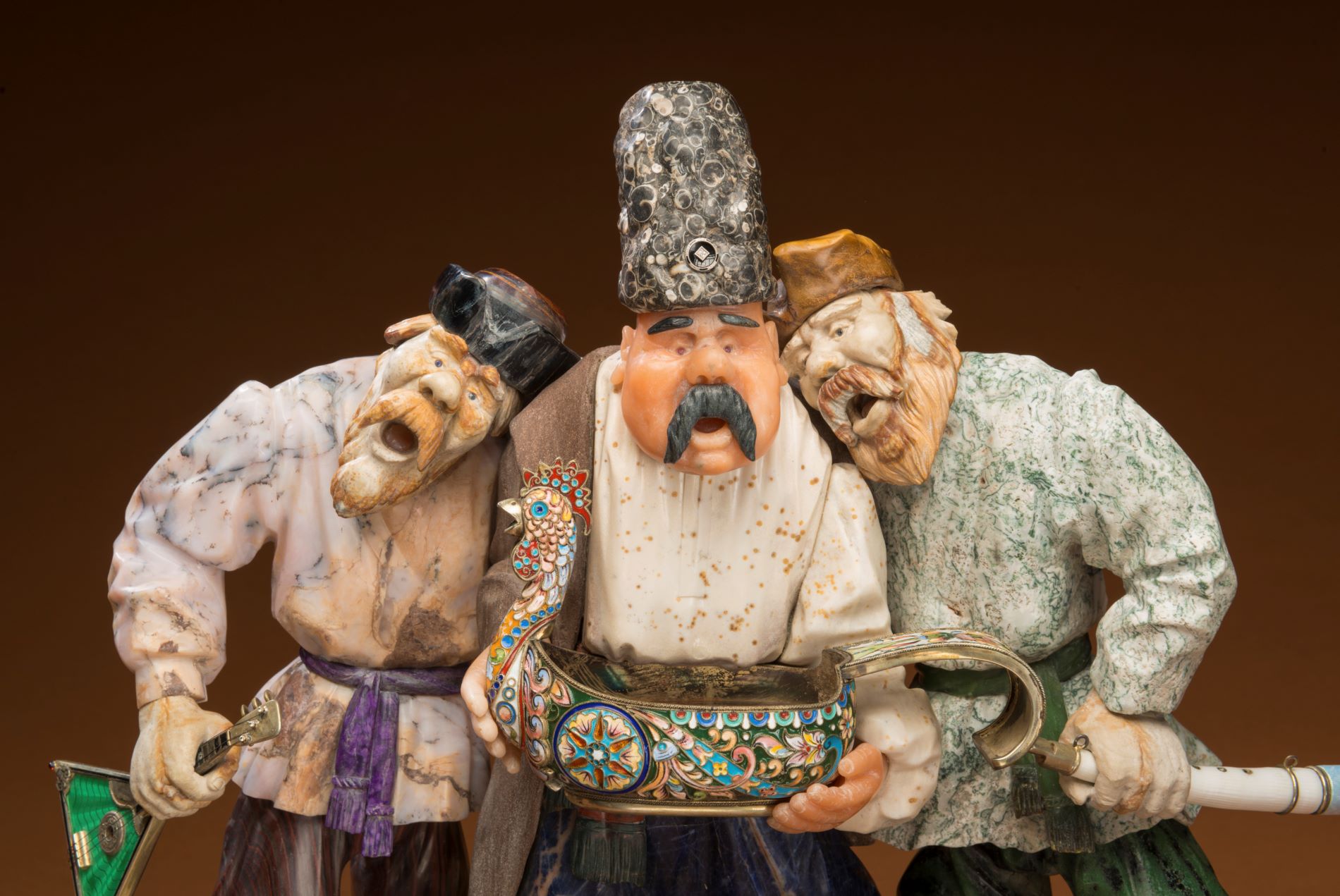
“Bosom Pals," on display at the Denver Museum of Nature & Science, is a vibrant depiction of three men immersed in the throes of song and merriment. (Photo/ Rick Wicker)
This March, the Denver Museum of Nature & Science will celebrate the 40th anniversary of Soviet artist Vasily Konovalenko’s gem carving exhibition here at the Denver Museum of Nature & Science.
A longtime fan favorite, the Konovalenko gem carving collection is displayed in a small exhibition on the third floor surrounded by the South America wildlife diorama. The Denver Museum of Nature & Science houses 20 of Konovalenko’s sculptures, the largest collection on public display found anywhere outside of the former Soviet Union.
Starting in 2009 alongside Museum Photographer Rick Wicker, Nash began working together on a book. In 2016, he published “Stories in Stone,” the first and only comprehensive English-language book on Konovalenko and his work.
To mark the occasion for this Spring edition of Catalyst, we sat down with Steve to ask him a few questions about Vasily Konovalenko’s life, art and legacy both globally, and locally here at the Denver Museum of Nature & Science.
Dr. Steve Nash worked at the Denver Museum of Nature & Science for over 17 years as Senior Curator of Archaeology and Director of Anthropology and the Avenir Conservation Center until 2023. While Steve leaves an extraordinary legacy at the Museum that is diverse and covers many fields, one of his top passions while at the Museum was studying, documenting and publishing comprehensive materials on Konovalenko's life work, which he published in his 2016 book “Stories in Stone”
We sat down with Steve to ask him a few questions about Vasily Konovalenko’s life, art and legacy both globally, and locally here at the Denver Museum of Nature & Science.
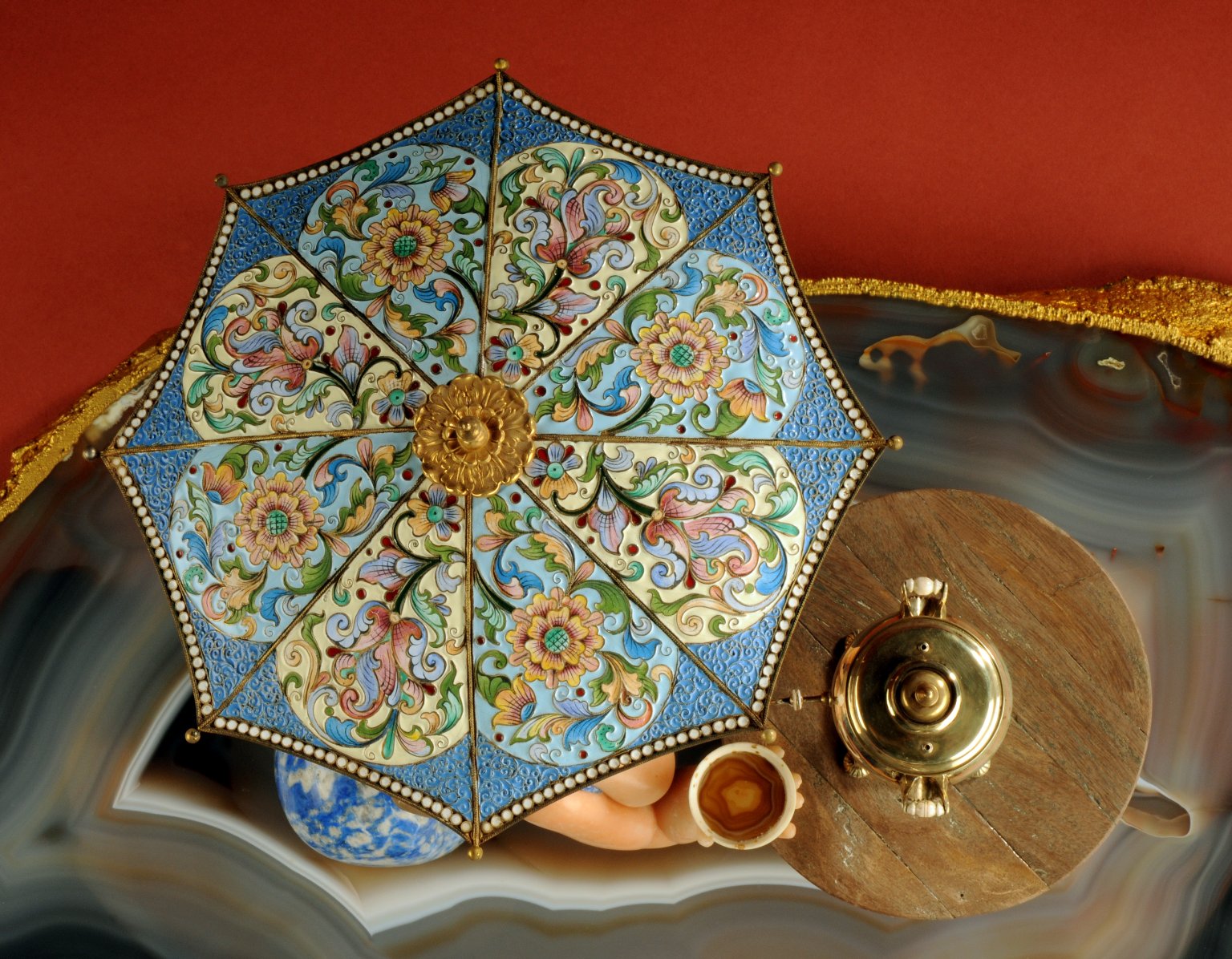
Detail of the umbrella in the sculpture "In the Sultry Afternoon II" by Konovalenko. (Photo/ Rick Wicker)
Do you remember the moment you first came across Vasily Konovalenko's gem carvings at the Museum? At the time, what first stood out for you? How has your appreciation evolved over time?
I came across Vasily Konovalenko's gem carvings for the first time in 2006, the year I started working at the Museum. Going through the Museum’s anthropology holdings, the exquisitely whimsical nature of Konovalenko’s carvings immediately caught my attention. Over time, my appreciation for these carvings has only deepened. The process of unraveling the stories, techniques and history behind each piece has revealed layers of cultural, historical and artistic significance.
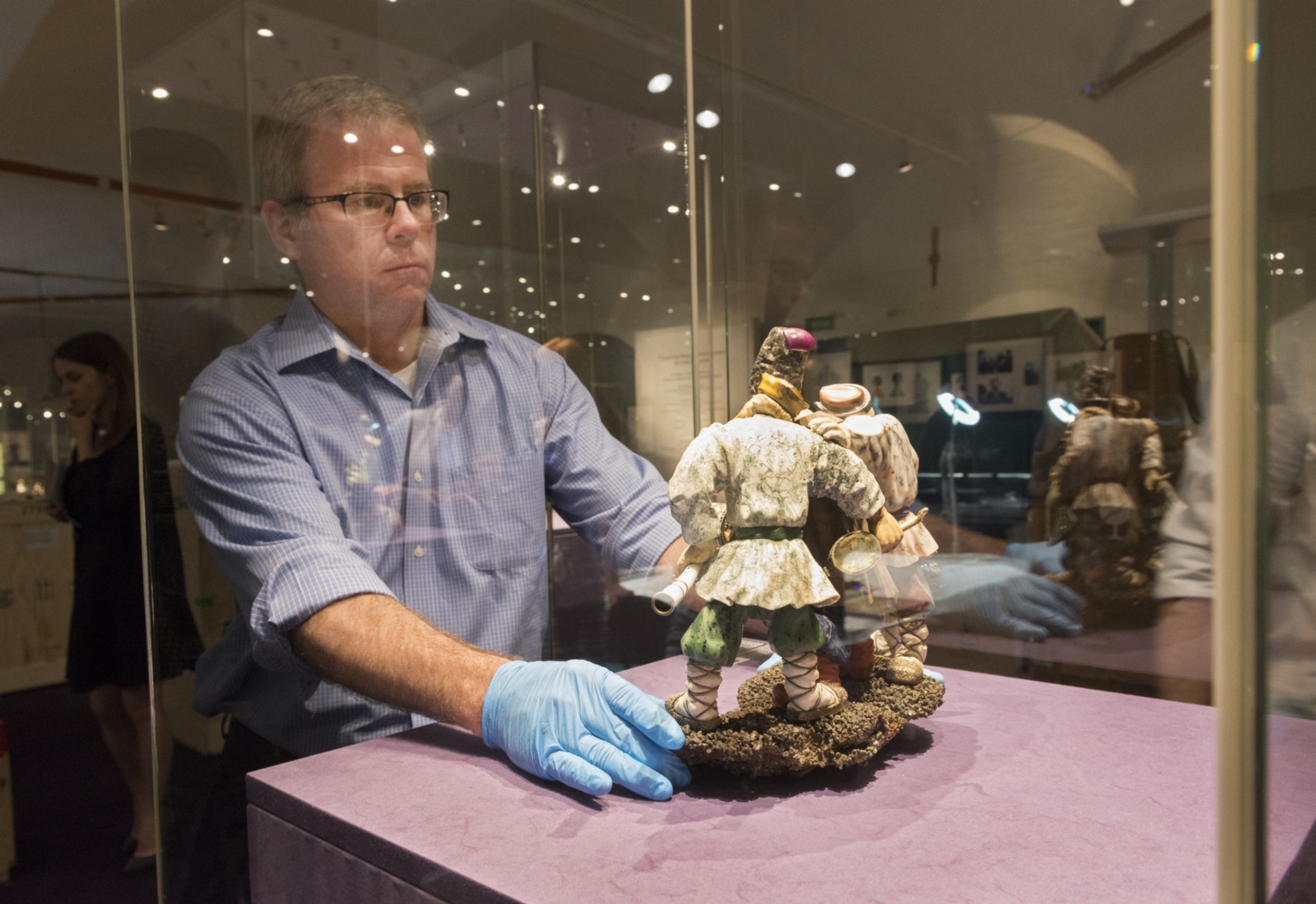
Dr. Steve Nash, former curator of Archaeology, installs the Konovalenko sculpture "Bosom Pals" prior to exhibition. (Photo/ Rick Wicker)
In public presentations at the Museum, you've highlighted the intricate detail and unique use of gemstones in Konovalenko's work. What, in your opinion, sets his sculptures apart from other gemstone carvings and artists?
Konovalenko's sculptures often used a lot of different gems and minerals in each one of his carvings. Some of his sculptures are made with up to 20 different materials, including malachite, amethyst, jade, obsidian and jasper. He had an eye for catching the imperfections in the material and turning them into his art. For example, in his piece titled "Prisoners," Konovalenko used Beloretsk quartz for the face of the kneeling prisoner. The natural imperfections in this quartz were ingeniously incorporated to indicate the stubble of the prisoner's beard. This creative use of the stone's inherent characteristics not only adds realism to the sculpture but also contributes to the portrayal of the harsh conditions and ruggedness of life in a Stalin-era labor camp. He created them in a way to be appreciated from all angles, which set him apart from more static works from contemporary artists like Carl Fabergé.
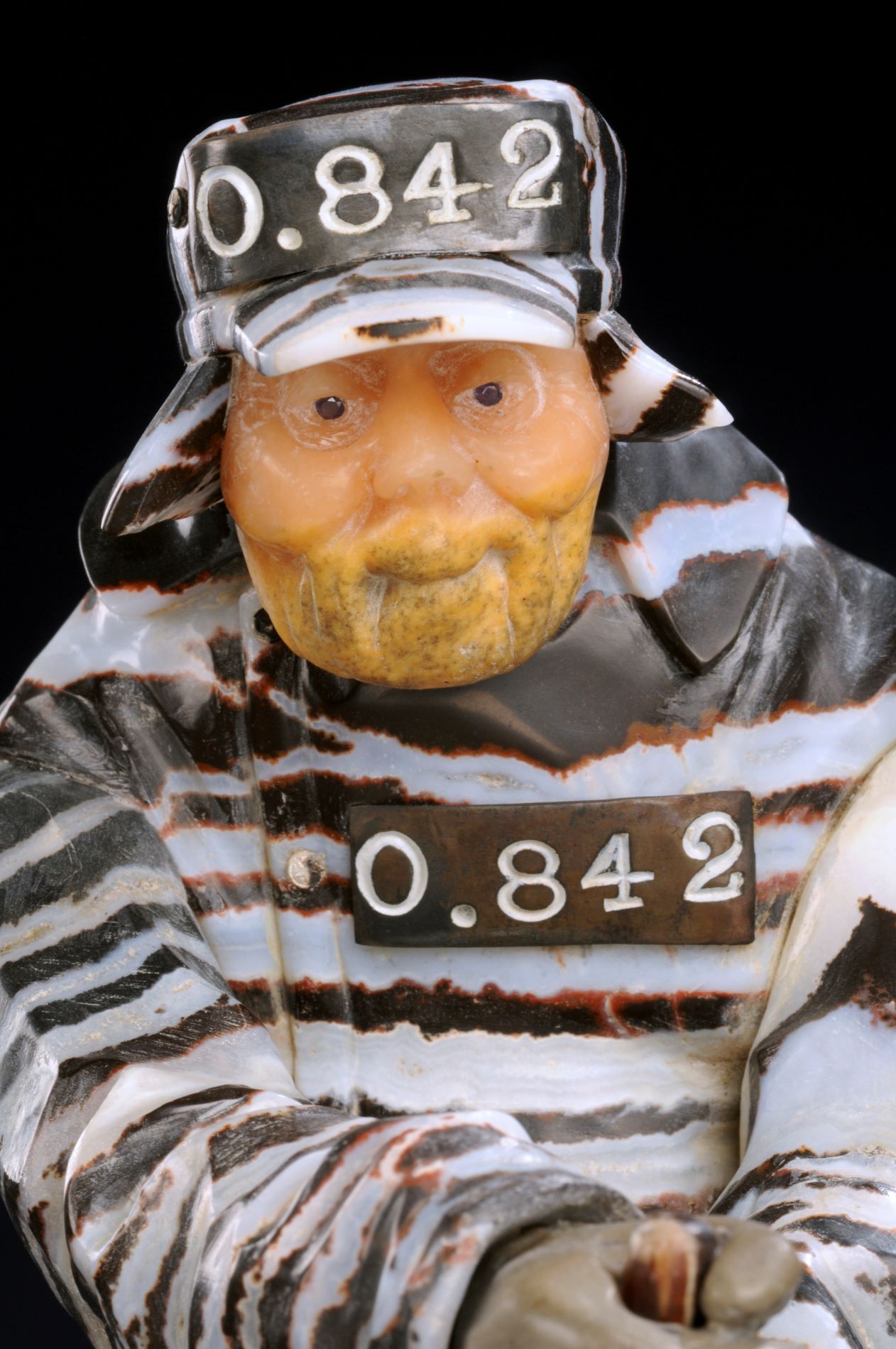
Konovalenko used Beloretsk quartz for the face of the kneeling prisoner in "Prisoners." The natural imperfections in this quartz were ingeniously incorporated to indicate the stubble of the prisoner's beard. (Photo/ Rick Wicker)
Can you provide a brief history of how the Denver Museum of Nature & Science came to acquire its world-leading collection of Konovalenko sculptures?
After leaving the Soviet Union and emigrating to the U.S., Konovalenko was sponsored by, among others, a man named Jack Ortman, a New York-based diamond dealer, who provided him with the capital and materials needed for his work. Despite a rigorous contract that demanded the production of numerous sculptures in a short period, Konovalenko managed to create some of his finest pieces during this time, many of which are now displayed at the Museum.
The Museum eventually opened the exhibition with a grand gala in 1984 thanks to the support of Alvin Cohen, a Museum Trustee. The sculptures, initially planned for display for only one year, were an immediate success, which led to an extended exhibition.
Cohen eventually purchased the entire collection from Ortman. In a remarkable act of philanthropy, the Cohens donated 20 Konovalenko sculptures to the Denver Museum of Nature & Science Foundation, ensuring their permanent display and making them a key attraction at the Museum.
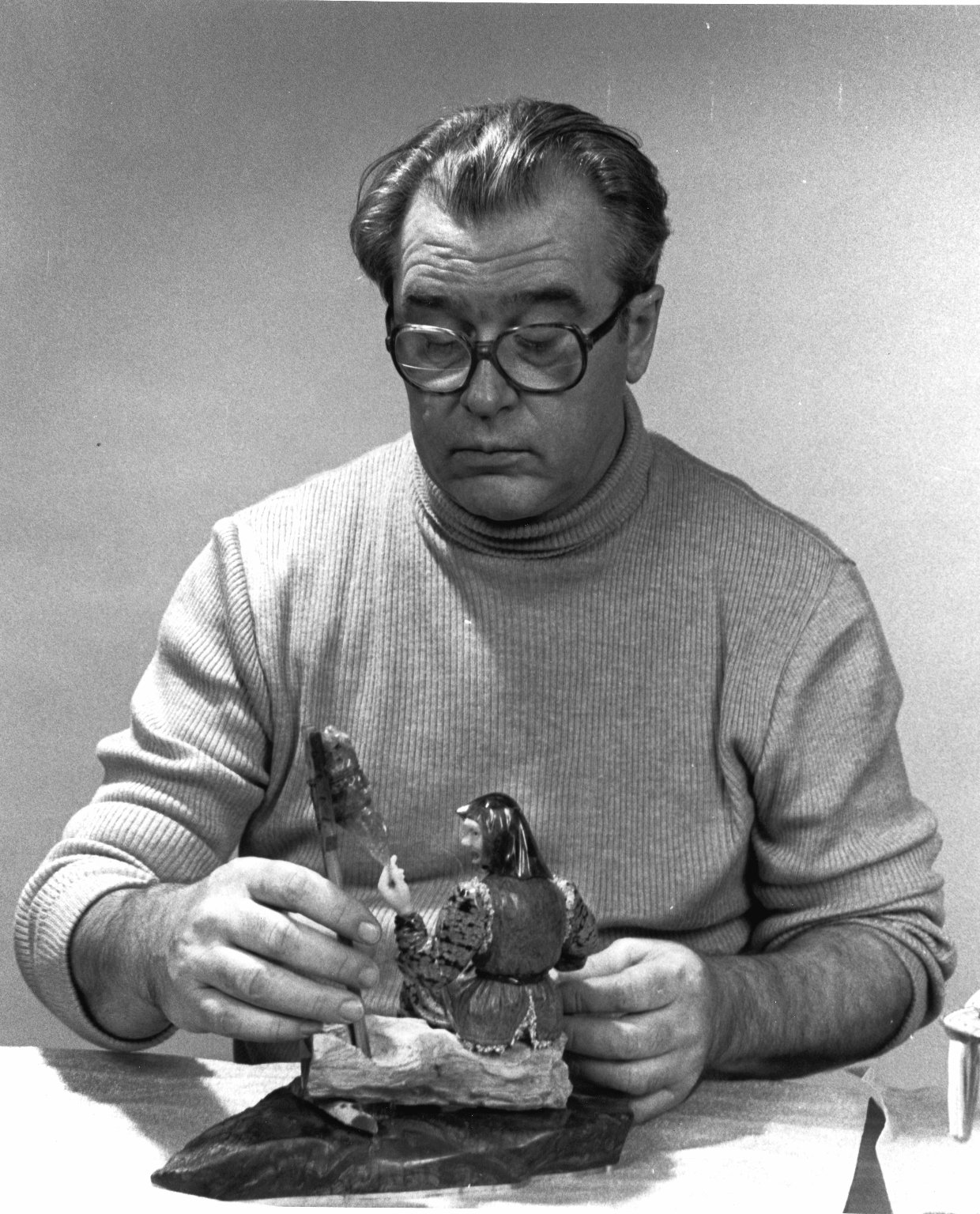
Artist Vasily Konovalenko with one of his sculptures. (Photo/ Jill Skorpen)
What is the story behind the "Bereaved Mother" sculpture? How does this story continue to resonate today?
Konovalenko crafted "Bereaved Mother" between 1973 and 1981 while working at Samotsvety, a museum in Moscow. The sculpture was reportedly commissioned by Communist Party officials for Victory Day, an annual commemoration of the Soviet victory over Nazi Germany. The piece reflects the profound impact of the Soviet experience during World War II, when over 20 million Soviet citizens died at war. The image of a grieving mother over a military tomb, as represented in Konovalenko's sculpture, mirrors the tragic reality of ongoing conflicts to this day, where countless families face the pain of losing loved ones.
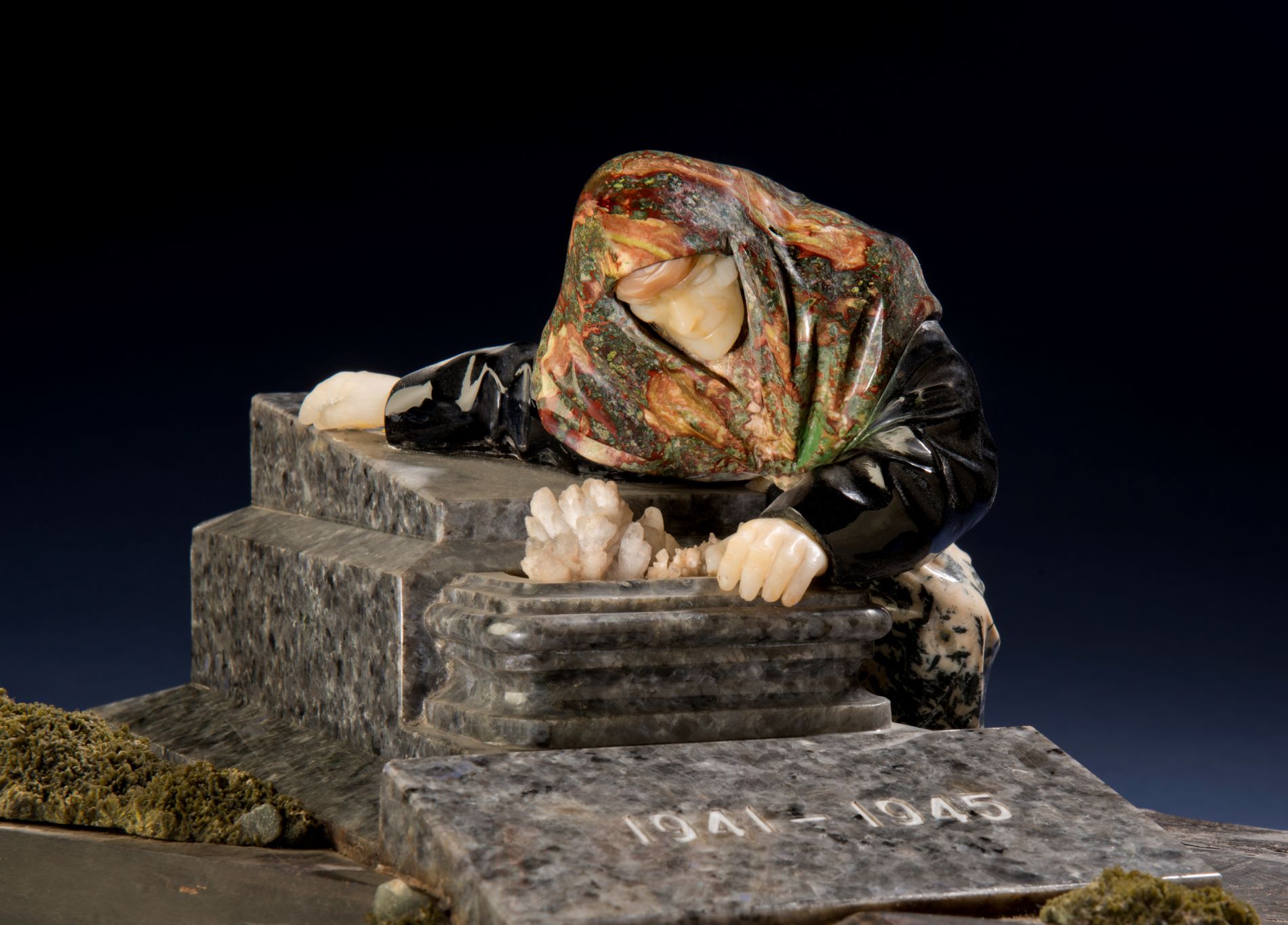
The "Bereaved Mother" sculpture portrays a poignant and somber scene: a mother grieving over the Tomb of the Unknown Soldier. (Photo/ Rick Wicker)
Beyond "Bereaved Mother," do you have any other personal favorite Konovalenko carvings from our collections or elsewhere in the world? If so, could you share which ones and why?
Well, I have a few! One sculpture that captivates me is “Bosom Pals.” This work, on display at the Denver Museum of Nature & Science, is a vibrant depiction of three men immersed in the throes of song and merriment. It's an exquisite tableau of conviviality, where one figure holds a balalaika, another a bratina and the third a horn. Konovalenko's mastery is evident in the use of over 17 different gemstones, each chosen for its unique mineralogical and fracturing properties, and further embellished with gold-plated silver and cloisonné enamel. For me, “Bosom Pals” is a celebration of life's finer moments, encapsulated in stone.
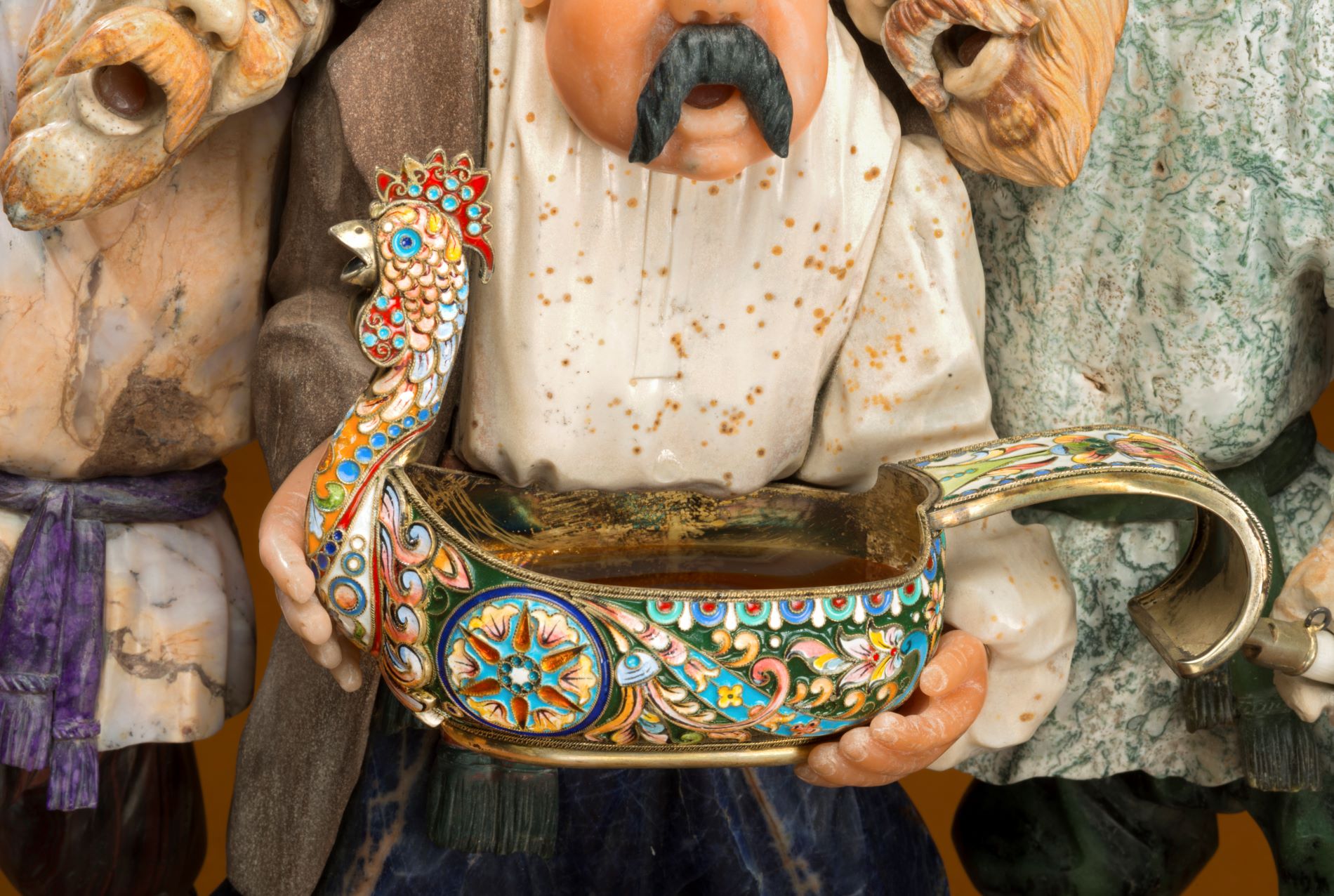
In "Bosom Pals," Konovalenko's mastery is evident in the use of over 17 different gemstones, each chosen for its unique mineralogical and fracturing properties, and further embellished with gold-plated silver and cloisonné enamel. (Photo/ Rick Wicker)
Another piece that resonates with profound emotional depth is “Prisoners.” This sculpture is a somber narrative, capturing the life of two inmates in a Siberian labor camp. Its color palette is intentionally muted, dominated by greys, blacks and whites, with only the ruby targets on their backs and over their hearts so that guards can “shoot to kill,” breaking the dull palette. This starkness effectively communicates the grimness of their existence. “Prisoners” holds a unique position in our collection for its political commentary.
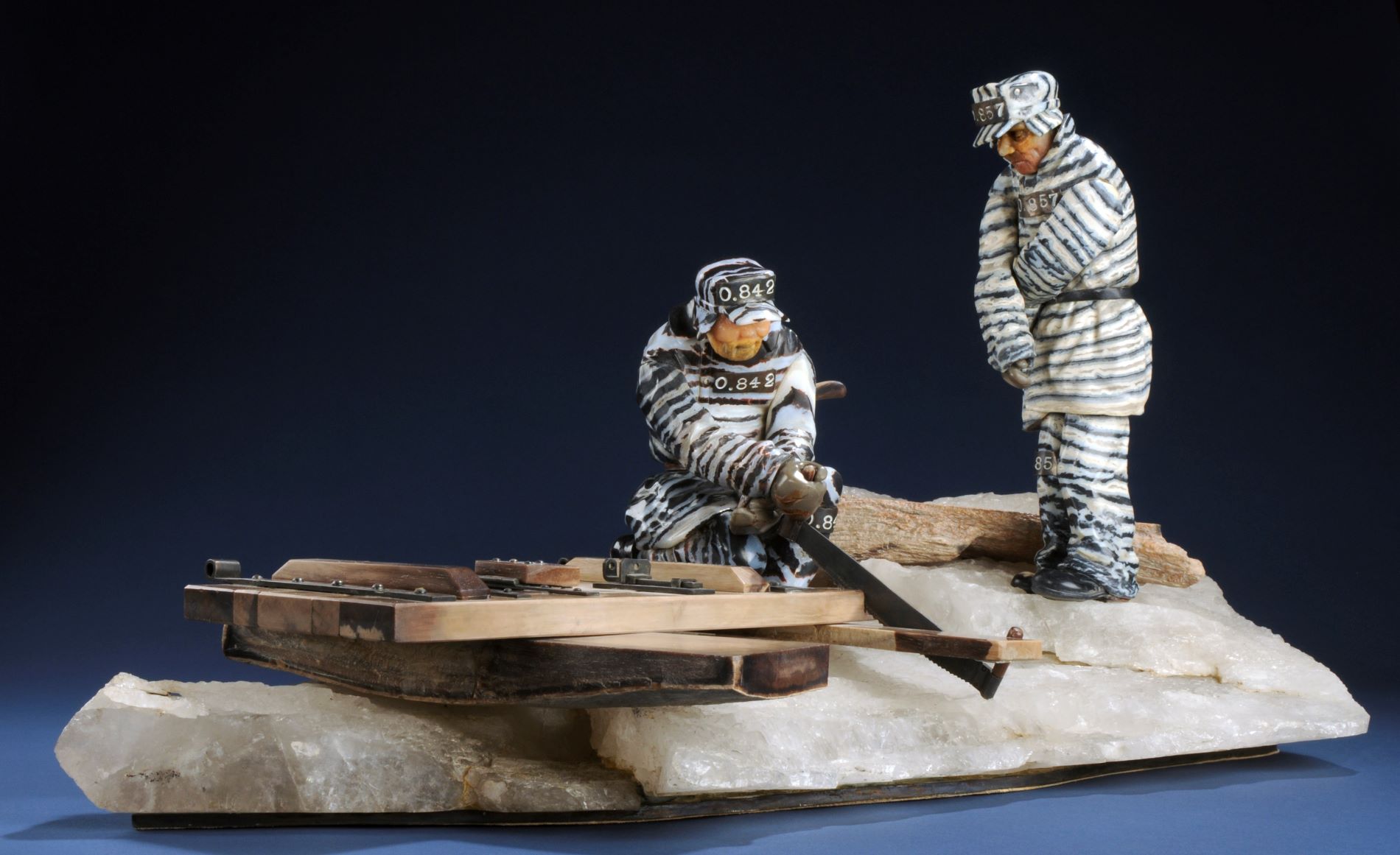
"Prisoners" portrays a somber narrative, capturing the life of two inmates in a Siberian labor camp. (Photo/ Rick Wicker)
How do you envision the future of the Konovalenko collection, and what legacy do you hope to leave regarding its curation?
The Denver Museum of Nature & Science’s Konovalenko collection is undeniably the first collection of his works on display anywhere in the world. My hope is that these works, by a Soviet artist, continue to bring people and institutions together at a time when the world is full of geopolitical tensions that are pushing us further and further apart. They should also remind us of the importance of simple, everyday pleasures — a warm cup of tea, singing and dancing and other non-digital activities.
Read more: Honoring Martin Luther King Jr.
Spring 2024
In This Edition
-
Why Is Castle Rock So Prominent?
How Museum Scientists Uncovered a Geologic Mystery
-
Celebrating 40th Anniversary of Konovalenko's Gem Carvings
Interview with Dr. Steve Nash on an Exceptional Life's Work
-
New Cutting-Edge Cryolab Launches at the Museum
And With It, A Deepening Understanding of Nature and Science
-
Dust Settles on Massive Rehousing Project
Over Half a Million Artifacts and Belongings Now Properly Stored in Anthropology Collections
-
How Many Beetles Does it Take To Eat Elephant Poop?
It Turns Out, Quite a Lot!
Share this: